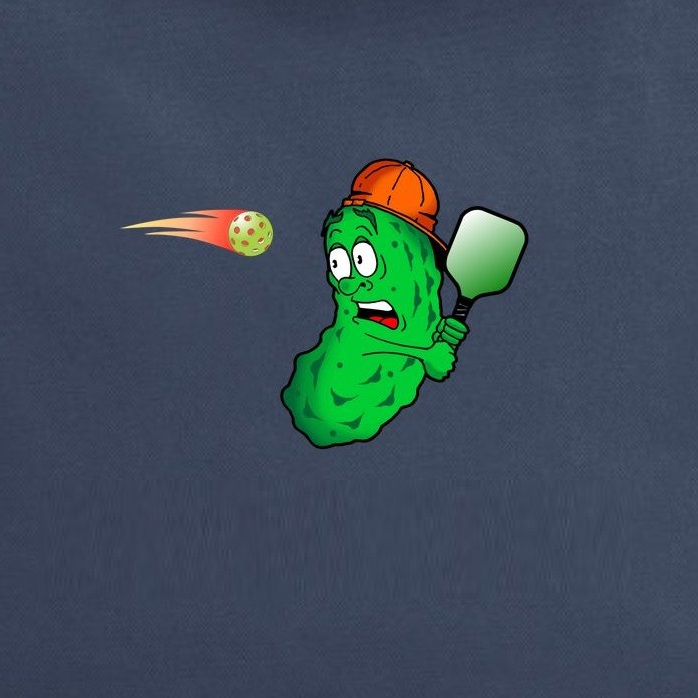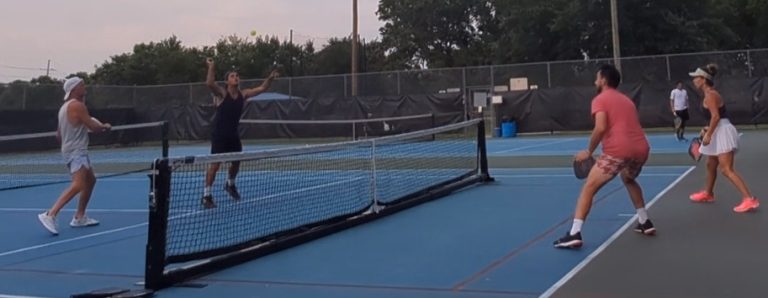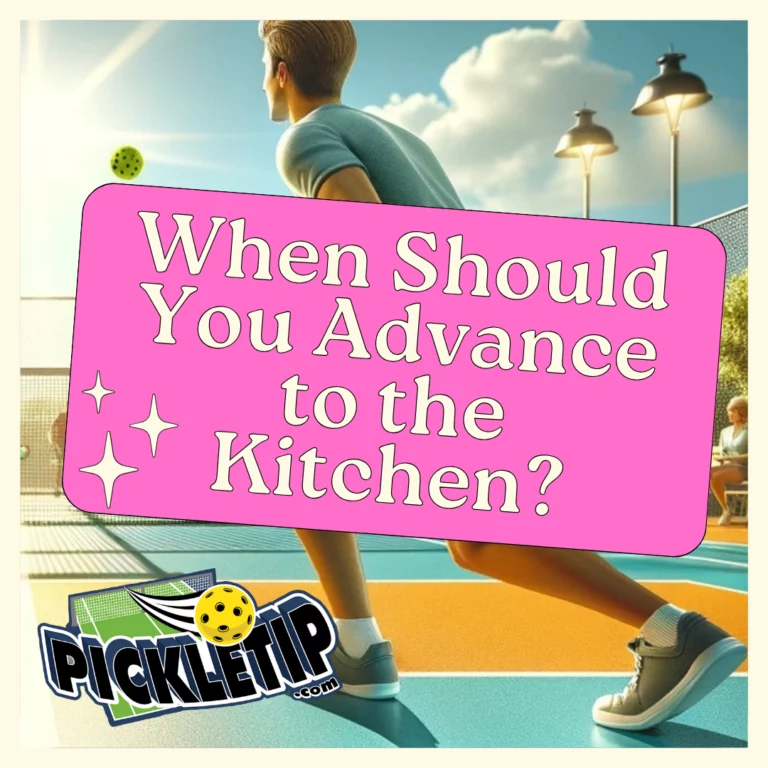Pickleball Training: Enhancing Your Game with Fencing Techniques
At first glance, tennis and pickleball might seem like identical twins of the racket sports family, sharing a net, a court, and the fundamental action of striking a ball with a handheld tool. However, this surface-level similarity belies the unique nuances and strategies that set pickleball apart. For tennis aficionados making the switch, pickleball training requires not just new skills, but also the unlearning of many tennis instincts. Interestingly, incorporating footwork techniques from fencing offers a promising bridge between these sports, providing an innovative approach to excel in pickleball. This article explores how blending elements from fencing can revolutionize Pickleball Training, helping tennis players adapt and thrive in this rapidly growing sport. Unlock the potential of fencing techniques, with its rich history, to elevate your performance and to improve agility, balance, and strategic thinking.
Historical Insights: Fencing’s Legacy in Modern Pickleball
Fencing, with centuries of development, has evolved into a sport emphasizing precision, agility, and strategy. Its longstanding tradition offers a wealth of techniques that are surprisingly applicable to pickleball. The depth of history behind fencing’s refined movements and tactical approaches provides a solid foundation for enhancing the relatively newer sport of pickleball.
Fencing’s influence on pickleball becomes particularly evident in the No Volley Zone (NVZ), a critical area of the court where players are not allowed to volley the ball (hitting it in the air). This zone requires players to engage in a nuanced, tactical game, akin to the close-quarters combat seen in fencing. In fencing, athletes must be adept at reading their opponent’s intentions, reacting swiftly to their moves, and executing precise actions within a confined space. Similarly, in the NVZ, pickleball players must employ a high degree of finesse, anticipation, and strategic planning. The ability to quickly analyze an opponent’s positioning and potential actions, a skill honed in fencing, can be directly applied to pickleball when battling at the kitchen line. This demands not only physical agility but also a mental acuity in decision-making, mirroring the duel-like confrontations of fencing. The strategic use of feints and quick, decisive strikes in fencing can inspire pickleball players to develop deceptive plays and sharp, targeted shots that can outmaneuver opponents at close range. Thus, the legacy of fencing, with its emphasis on precision, agility, and tactical prowess, enriches the strategic depth of pickleball, particularly in the high-stakes environment of the No Volley Zone.
Pickleball Training: The Synergy Between Pickleball and Fencing
The movements, balance, and footwork required in pickleball have profound similarities to fencing. Both sports demand quick, precise movements and the ability to maintain balance through dynamic exchanges. By adopting fencing’s disciplined approach to movement and balance, pickleball players can significantly improve their court presence and effectiveness.
Fencing Techniques for Superior Pickleball Performance
The integration of fencing drills into pickleball training emphasizes agility, balance, and quick reflexes, addressing the core aspects needed for superior play.
Footwork Drills: Mastering Movement
Footwork is essential in both pickleball and fencing. Here’s how to adapt fencing footwork drills to improve pickleball positioning and agility.
Effective footwork is crucial in both pickleball and fencing. The Basic Lunge and Recovery drill, fundamental in fencing, is perfect for enhancing reach and agility on the pickleball court. Incorporating side-to-side movements also improves lateral quickness, a vital skill for covering the court efficiently. These drills, rooted in centuries of fencing tradition, provide a structured approach to mastering movement in pickleball.
Start with the Basic Lunge and Recovery to improve reach and agility. Practice 3 sets of 10 lunges on each leg, focusing on balance and quick recovery. Enhance lateral movement with Side-to-Side Movements, crucial for effective court coverage. Perform sets of 20-30 seconds of continuous movement to simulate game scenarios.
- Basic Lunge and Recovery: This drill aims to improve your reach and agility on the pickleball court. Practice the fencing lunge to enhance court coverage and volley reach. Adjust the lunge distance to mimic movement towards a pickleball shot, focusing on balance and quick recovery for consecutive shots. Practice this drill for 10-15 minutes, 2-3 times a week, incorporating 3 sets of 10 lunges on each leg.
- Side-to-Side Movements: Enhance your lateral movement with fencing’s side-to-side footwork drills, crucial for effective court coverage in pickleball. Use pickleball court lines to guide movements, simulating actual game scenarios. Focus on staying low and quick. Include this in your routine for 10 minutes, 3 times a week, performing sets of 20-30 seconds of continuous movement.
Balance Exercises: Achieving Stability
Balance directly impacts shot accuracy and consistency. Incorporate One-Legged Balance Drills into your daily routine, alternating legs for 5-10 minutes. These exercises, practiced in your playing stance, mimic game conditions and focus on maintaining stability during play.
- One-Legged Balance Drills: Improve your stability and shot accuracy with one-legged balance exercises borrowed from fencing. Practice in your playing stance and simulate paddle swings to mimic game conditions, focusing on maintaining balance. Practice daily for 5-10 minutes, alternating legs, aiming to hold the balance for longer periods gradually.
The One-Legged Balance Drills from fencing not only improve stability but also enhance shot accuracy in pickleball. This exercise, inspired by the balanced stances essential in fencing, is particularly beneficial for maintaining control during rapid volleys and shifts in direction.
Reaction Time Drills: Enhancing Reflexes
Reaction Ball Drills, adapted from fencing training, are designed to sharpen reflexes, allowing pickleball players to better anticipate and react to opponents’ moves. These exercises highlight the importance of quick, responsive play, mirroring the fast-paced decision-making found in fencing.
Quick reactions can turn the tide in both fencing and pickleball. Try these drills to sharpen your reflexes.
- Reaction Ball Drills: Use a reaction ball to improve your hand-eye coordination and speed up your response time. Bounce a reaction ball against a wall, attempting to catch it on the rebound with one hand. Increase difficulty by standing closer to the wall or using a smaller ball. Simulate pickleball shots by varying the throw’s direction and force, reacting as you would to an unexpected shot in a game. Integrate this drill into your training 2-3 times a week, with 10-15 minutes per session.
Adapting fencing drills focused on reaction time can significantly benefit pickleball players. Utilize Reaction Ball Drills to improve hand-eye coordination and anticipate fast-paced volleys.
Strategic Thinking: Learning from Fencing’s Tactical Play
Strategic thinking in fencing, where anticipating an opponent’s next move is critical, is directly applicable to pickleball. This mindset, cultivated through years of fencing’s tactical evolution, teaches pickleball players to think ahead, enhancing their ability to strategize during play.
Learning to anticipate an opponent’s next move is crucial. Fencing strategies can teach pickleball players to think and act strategically.
Predicting Opponent Moves
Adopt fencing’s anticipatory techniques to outthink and outmaneuver your pickleball opponents. Practice with a partner who simulates various shots. Attempt to predict and position yourself for the return before the shot is made. Focus on the opponent’s body language and paddle position to anticipate shot direction and type. Practice during regular training sessions, dedicating 15-20 minutes to strategic drills 2 times a week.
Integrating Fencing Drills into Your Pickleball Routine
Starting with footwork and advancing through balance and reaction time drills, the integration of fencing techniques into pickleball training offers a comprehensive approach to skill enhancement. This blend of historical wisdom and modern sports training enriches pickleball skills, fostering a deeper understanding of movement, balance, and tactical play.
Incorporating fencing techniques into pickleball training can provide valuable insights into balance, posture, and overall body alignment. Much like in fencing, where maintaining balance is crucial for agility and swift movement, pickleball players can benefit from similar principles to enhance their performance on the court.
Establish a Solid Base
Firstly, adopting the wide base from fencing can aid pickleball players in achieving better balance. By bending the knees lower and widening the space between the feet, players can lower their center of gravity, which reduces the likelihood of toppling over during fast-paced movements on the court. This adjustment promotes stability and allows players to react quickly to incoming shots.
Additionally, the distance between the feet plays a crucial role in maintaining balance in both sports. While the ideal distance may vary depending on individual preferences and playing styles, ensuring that the feet are at least shoulder-width apart provides a solid base of support. This stance allows players to move swiftly across the court while maintaining stability and control over their movements.
Proper Posture
Furthermore, paying attention to posture is essential in both fencing and pickleball. In fencing, keeping the neck and back straight helps prevent the body from swaying, thus maintaining stability during bouts. Similarly, in pickleball, maintaining proper posture throughout matches can improve balance and reduce the risk of injury. Players should focus on aligning their shoulders and hips, ensuring that their body remains stable and aligned for optimal performance.
Incorporating fencing-inspired exercises into pickleball training routines can help players develop strength, flexibility, mobility, and explosiveness—all essential components for success on the court. By combining these elements with specific pickleball drills and techniques, players can enhance their overall performance and elevate their game to new heights.
Workout drills to improve balance and stability:
For Legs:
Squats (hold for 1 second at bottom):
- Stand with feet shoulder-width apart, toes slightly turned out.
- Lower your body by bending your knees and hips, keeping your back straight.
- Descend until your thighs are parallel to the ground, or as low as comfortable.
- Hold this position for one second, then return to the starting position by pushing through your heels.
Deadlifts (or good mornings):
- Stand with feet hip-width apart, holding a barbell or weights in front of your thighs.
- Hinge at your hips while keeping your back straight, lowering the weights towards the ground.
- Keep the weights close to your body as you lower, feeling a stretch in your hamstrings.
- Engage your glutes and hamstrings to return to the starting position, squeezing your glutes at the top.
Bulgarian Split Squats:
- Stand facing away from a bench or elevated platform, with one foot resting on it behind you.
- Lower your body by bending your front knee, keeping your torso upright.
- Lower until your back knee nearly touches the ground, then push through your front heel to return to the starting position.
- Repeat on both legs.
Weighted Lunges (forward or backward):
- Hold weights in each hand, standing with feet together.
- Step forward or backward with one leg, lowering your body until both knees are bent at 90-degree angles.
- Push through your front heel to return to the starting position, then repeat on the other leg.
Box Jumps:
- Stand facing a sturdy box or platform.
- Jump explosively onto the box, landing softly with both feet.
- Step or jump back down and immediately repeat.
Glute Bridge (progress to single leg):
- Lie on your back with knees bent and feet flat on the ground.
- Lift your hips towards the ceiling by squeezing your glutes, keeping your back straight.
- Lower back down and repeat. To progress, lift one leg straight up while bridging.
Single Leg Squats:
- Stand on one leg with the other leg lifted slightly off the ground.
- Lower your body by bending your knee, keeping your chest up and back straight.
- Push through your heel to return to standing, then repeat on the other leg.
Lateral Band Walks:
- Place a resistance band around your ankles.
- Take small steps sideways, maintaining tension in the band.
- Keep your hips level and core engaged throughout the movement.
For Core:
Planks:
- Start in a push-up position, with elbows bent and forearms on the ground.
- Keep your body in a straight line from head to heels, engaging your core muscles.
- Hold this position for the desired duration.
Russian Twists (weighted with med ball):
- Sit on the ground with knees bent and feet lifted off the ground.
- Hold a medicine ball or weight with both hands.
- Twist your torso to one side, bringing the weight towards the ground beside you.
- Return to the center and twist to the other side, repeating the movement.
Cable Twists:
- Stand perpendicular to a cable machine with the cable at chest height.
- Hold the handle with both hands and extend your arms in front of you.
- Rotate your torso away from the machine, then return to the starting position.
V-Sits:
- Sit on the ground with legs extended and arms reaching towards your feet.
- Lift your legs and upper body off the ground, forming a V shape with your body.
- Hold this position, balancing on your sit bones, then lower back down.
Side Leg Lifts:
- Lie on one side with legs stacked and bottom arm extended for support.
- Lift your top leg towards the ceiling, keeping it straight and in line with your body.
- Lower back down with control and repeat on both sides.
For Upper Body:
Cable External Rotations:
- Attach a resistance band or cable at shoulder height.
- Stand perpendicular to the machine, holding the handle with the hand farthest from the machine.
- Keep your elbow bent at 90 degrees and rotate your forearm away from your body.
- Return to the starting position and repeat.
Resistance Band Internal Rotations:
- Adjust the cable or resistance band to the opposite side, holding the handle with the hand closest to the machine.
- Keep your elbow bent at 90 degrees and rotate your forearm towards your body.
- Return to the starting position and repeat.
Cable Lateral Raises:
- Stand facing a cable machine with the handle at hip height.
- Hold the handle with one hand and raise your arm out to the side until it’s parallel to the ground.
- Lower back down with control and repeat on both sides.
Lat Pulldowns:
- Sit at a lat pulldown machine with knees under the pads and feet flat on the ground.
- Grasp the bar with an overhand grip slightly wider than shoulder-width apart.
- Pull the bar down towards your chest, squeezing your shoulder blades together.
- Slowly release the bar back up and repeat.
Farmer’s Walks:
- Hold a heavy dumbbell or kettlebell in each hand.
- Walk forward with a stable posture, engaging your core and keeping your shoulders back.
- Take controlled steps for the desired distance or time.
Performing these exercises with proper form and technique is essential for maximizing their effectiveness and minimizing the risk of injury. Start with lighter weights or resistance bands and gradually increase as you build strength and confidence in each movement. Additionally, focus on maintaining stability and balance throughout each exercise, engaging your core muscles to support your body’s movements. Incorporating these workout drills into your training routine can help improve overall balance, stability, and performance on the pickleball court.
Pickleball Training: A Fusion of Tradition and Innovation
Integrating fencing’s time-honored techniques into pickleball training bridges centuries of athletic refinement with the dynamic demands of modern sport. This unique fusion not only elevates physical capabilities but also instills a tactical depth into pickleball play, promising a transformative impact on your performance.








One Comment